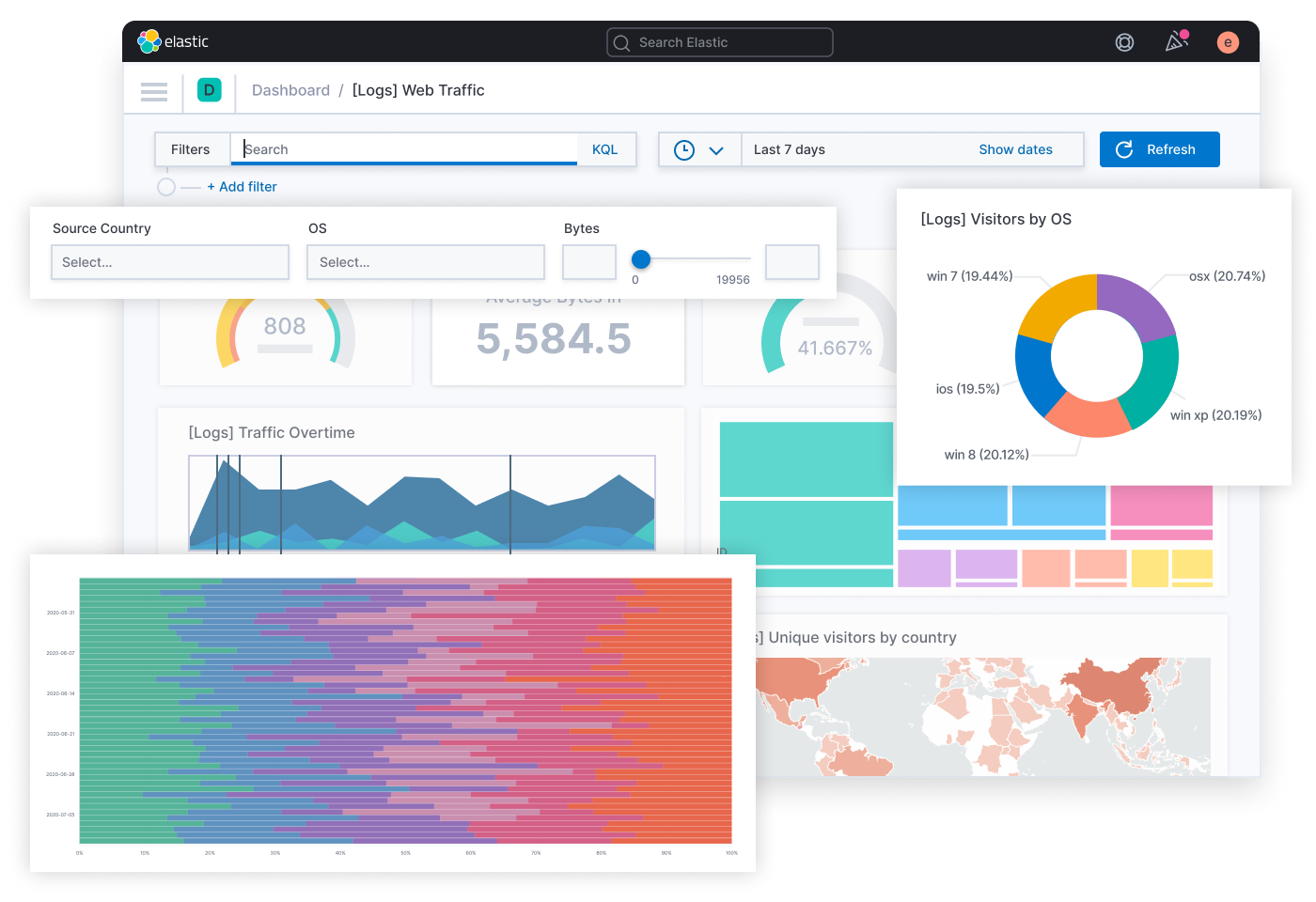Elastic: Complete Buyer's Guide
Enterprise-grade search and analytics platform
Elastic positions itself as an enterprise-grade search and analytics platform leveraging AI-powered semantic search to transform how ecommerce businesses handle product discovery and customer engagement. The platform combines vector embeddings with traditional search methods to process conversational queries more effectively than pure keyword systems, addressing the growing demand for natural language product search[39][41][42].
Market Position & Maturity
Market Standing
Elastic's market position centers on enterprise-grade search and analytics capabilities, differentiating through hybrid search architecture that combines semantic understanding with traditional keyword matching[42].
Company Maturity
Elastic demonstrates strong financial stability with 17% year-over-year revenue growth reaching $1.483 billion in FY2025 and Elastic Cloud revenue growing 26% to $688 million[53].
Growth Trajectory
Growth trajectory indicators include expanding customer base and continued investment in AI capabilities, particularly semantic search and generative AI experiences using proprietary data[39].
Industry Recognition
Industry recognition includes successful implementations at major enterprises like AutoScout24, MercadoLibre, and HSE, demonstrating platform maturity across diverse ecommerce environments[40][48][50].
Strategic Partnerships
Strategic partnerships and ecosystem positioning support long-term viability, though specific partnership details require verification through direct vendor consultation.
Longevity Assessment
Elastic's financial performance and customer expansion indicate sustainable competitive positioning within the search and analytics market.
Proof of Capabilities
Customer Evidence
AutoScout24 achieved remarkable scalability improvements, processing 100 million daily queries with 10x faster response times while reducing total cost of ownership by 5x[50].
Quantified Outcomes
HSE's ecommerce implementation delivered measurable business impact with a 4% increase in website click-through rates and 8% higher customer satisfaction after deploying AI-powered search[40].
Case Study Analysis
MercadoLibre's mission-critical deployment successfully managed 66% growth in product listings from 12 million to 20 million items without proportional cost increases, demonstrating scalability for rapidly expanding ecommerce operations[48].
Market Validation
Enterprise customer validation includes 1,510+ customers in enterprise brackets, indicating substantial market adoption across diverse industries and use cases[53].
Competitive Wins
ROI validation emerges from multiple customer implementations, with MercadoLibre achieving results within 6 months of deployment[48].
Reference Customers
Reference customers include AutoScout24, MercadoLibre, and HSE, validating Elastic's capacity to handle mission-critical search infrastructure[40][48][50].
AI Technology
Elastic's AI capabilities center on semantic search technology utilizing vector embeddings to understand contextual meaning behind customer queries, enabling more accurate product discovery compared to traditional keyword matching[39].
Architecture
The technology's hybrid architecture combines vector-based semantic understanding with traditional keyword search, providing fallback mechanisms when AI interpretation fails while maintaining search result relevance[42].
Primary Competitors
Competitive context includes Amazon Alexa's dominance in voice shopping with proprietary capabilities but platform dependency that limits flexibility compared to Elastic's vendor-neutral approach[2].
Competitive Advantages
Hybrid Search Architecture differentiates Elastic from pure AI solutions or legacy keyword-only systems through its combination of semantic understanding with traditional keyword matching[42].
Market Positioning
Elastic's market position emphasizes enterprise-grade capabilities for organizations with complex technical requirements and substantial scale needs.
Win/Loss Scenarios
The platform's 6-9 month implementation timelines create competitive disadvantages against faster-deploying alternatives for organizations prioritizing rapid deployment over advanced capabilities[40][48].
Key Features

Pros & Cons
Use Cases
Integrations
Pricing
Featured In Articles
Comprehensive analysis of Voice Search Optimization for Ecommerce for Ecommerce businesses and online retailers. Expert evaluation of features, pricing, and implementation.
How We Researched This Guide
About This Guide: This comprehensive analysis is based on extensive competitive intelligence and real-world implementation data from leading AI vendors. StayModern updates this guide quarterly to reflect market developments and vendor performance changes.
57+ verified sources per analysis including official documentation, customer reviews, analyst reports, and industry publications.
- • Vendor documentation & whitepapers
- • Customer testimonials & case studies
- • Third-party analyst assessments
- • Industry benchmarking reports
Standardized assessment framework across 8 key dimensions for objective comparison.
- • Technology capabilities & architecture
- • Market position & customer evidence
- • Implementation experience & support
- • Pricing value & competitive position
Research is refreshed every 90 days to capture market changes and new vendor capabilities.
- • New product releases & features
- • Market positioning changes
- • Customer feedback integration
- • Competitive landscape shifts
Every claim is source-linked with direct citations to original materials for verification.
- • Clickable citation links
- • Original source attribution
- • Date stamps for currency
- • Quality score validation
Analysis follows systematic research protocols with consistent evaluation frameworks.
- • Standardized assessment criteria
- • Multi-source verification process
- • Consistent evaluation methodology
- • Quality assurance protocols
Buyer-focused analysis with transparent methodology and factual accuracy commitment.
- • Objective comparative analysis
- • Transparent research methodology
- • Factual accuracy commitment
- • Continuous quality improvement
Quality Commitment: If you find any inaccuracies in our analysis on this page, please contact us at research@staymodern.ai. We're committed to maintaining the highest standards of research integrity and will investigate and correct any issues promptly.